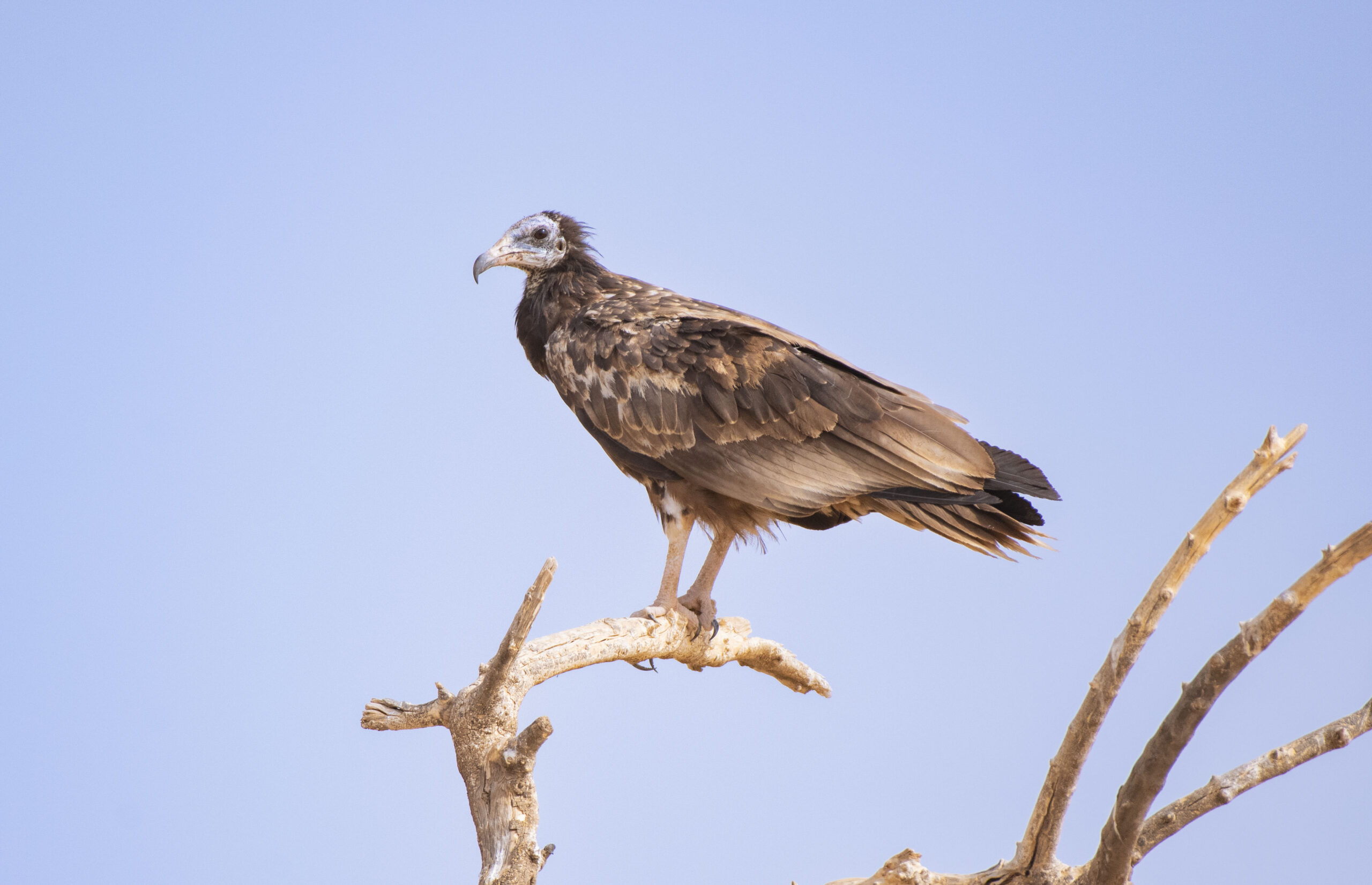
While not quite the pretty bird of your dreams, the vulture’s beauty lies in the crucial balancing act it plays in our ecosystem. Endowed with industrial strength digestive systems, these scavengers are able to consume putrid carrion without any harmful consequences, thanks to powerful gastric juices and gut bacteria. This organic disposal of animal cadavers is known to contain the spread of dangerous diseases to humans and other species. However, by the end of the last century, a deadly painkiller for cattle managed to wipe out nearly 90% of our vulture population. This medicine, called diclofenac, is believed to have caused renal failure in the raptors, and was ultimately banned by the government in 2006. In such a hapless scenario, when a carcass dump quietly metamorphoses into a meaty smorgasbord for these magnificent albeit critically endangered birds, it gives conservationists plenty of reason to whoop with joy.


Jorbeed Conservation Reserve started its life some four decades ago as a government designated site for disposing off Bikaner’s dead cattle and camels. This is where animal carcasses are skinned and left for scavengers to pick meat and muscle off the bones before skeletal remains are removed for industrial use. “It was between 2002 and 2007 that locals began noticing a steady increase in the number of vultures here,” we are informed by Dr Jitendra Solanki, an avid bird-watcher, known locally as the Raptor Man. “Once word went around about the fantastic sightings, birding enthusiasts from India and overseas made a beeline for the place, especially between 2007 and 2012.” By the time it became a protected reserve (30 square kilometres) in 2012, Jorbeed was home to residents like the Egyptian Vulture, the smallest of the species in the world. The Indian, Long-billed, and King Vultures have also been reported but are a rarity. Other avian life commonly spotted includes the Tawny Eagle, Laggar Falcon, Spotted Owlet, and Green Bee Eater. The Red-naped Ibis is a regular visitor as well, mainly to feed upon the insects that the carcasses attract.

With the arrival of thousands of migratory birds in the winter months, the reserve takes on an even more festive air. Himalayan Griffons descend from their lofty mountain perches, while Eurasian Griffons make their way over from Afghanistan, Pakistan, and Central Asian countries. The Cinereous or Black Vulture, another resident of Central Asia, can also be seen at Jorbeed in all its glory. With a wingspan of seven feet, it is believed to be one of the largest birds of prey in the world; the second largest vulture, say experts. Joining the scavenger congregation at this feasting ground are raptors like the Steppe Eagle, Imperial Eagle, Greater and Indian Spotted Eagles. In deep winter, when the mercury plummets to freezing point at Jorbeed, the Saker Falcon wings it over from Europe, as does the White-tailed Eagle, a large Eurasian sea eagle. The Sociable Lapwing, Long-legged and Common Buzzards are some other species that are seen here. The reserve is also one of only two wintering grounds in Rajasthan for hundreds of the total 6000 Yellow-eyed Pigeons left in the world.


We slice through distinctly Thar terrain, with khejri, peelu, and babool trees dotting the sandy scrubland as far as the eye can see, to arrive at the vulture sanctuary. On seeing milestones marked Bhojanshala en route, we laughingly wonder if that’s a euphemism for Jorbeed. Dr Solanki, with whom we are spending an instructive morning at the reserve, clarifies, “In all likelihood it’s a reference to the former grazing grounds of Maharaja Ganga Singh’s horses a few kilometres beyond, where a village of the same name now thrives.” The Forest Department’s permanent viewing tower welcomes us at the entrance, less than two kilometres from the dumping site, and we are fortunate that the wind direction favours us. Otherwise, the assault on the olfactory, one hears, can often leave visitors reeling. And even though the scattered cadavers might attract some of the most striking scavengers of the world, the macabre spread is by no stretch of imagination a pretty sight. Clearly not an experience for the weak-stomached or faint of heart, a visit to Jorbeed is recommended only for die-hard wildlife buffs. Extra precaution also needs to be taken around a very large population of vicious canines here–street dogs left in the wild–known to chase vehicles and attack visitors on foot. All of the above notwithstanding, and despite unsightly mounds of non-biodegradable plastic–all that’s left of city cattle–speckling the place, there is little doubt that from Jorbeed’s morbid wastelands springs life and hope for the vulture.


Bikaner Bird Club Founded in 2015, the club, comprising 35 keen birders and naturalists, is building awareness in neighbouring villages about the ecological relevance of vultures, as they are generally looked upon as ominous and shooed away by pelting stones at them. Educative interactions on how their continual presence can lead to ecotourism are regularly held. Along with conducting free of charge sessions for students, club members are also engaged in bird rescues. For details, contact: 9414430948

Other Species
Mammals: Jungle Cats, Foxes, Jackals, Hedgehogs
Snakes: venomous – Soft-scaled Vipers, Cobras, and Common Kraits; non-venomous – Rat Snakes, Sand Boas, Racers, Black Headed Royals
Lizards: Spiny Tailed (Sanda), Sand Geckos, Brilliant Agamas.
Dos & Don’ts
Face masks are recommended
Carry binoculars, checklist, drinking water and light snacks
Do not charge at the birds
Avoid open-topped vehicles
Stick to designated trail
Avoid walking
Connectivity: Jorbeed is 18 kilometres south of Bikaner, the closest rail head
Best Season: Winter
Timings: Sunrise to Sunset




